Journalist Matt Taibbi just released the 9th batch of Twitter documents. This latest #TwitterFiles drop includes documents that claim the FBI was simply the ‘doorman to a vast program of social media surveillance and censorship’ across multiple agencies’.
Taibbi explained that Twitter had so many interactions with OGAs (or “other government agencies” as they are called in the tweets), the company couldn’t keep them all straight: He explained, “Twitter had so much contact with so many agencies that executives lost track. Is today the DOD, and tomorrow the FBI? Is it the weekly call, or the monthly meeting? It was dizzying.”
Follow his full Twitter thread below:
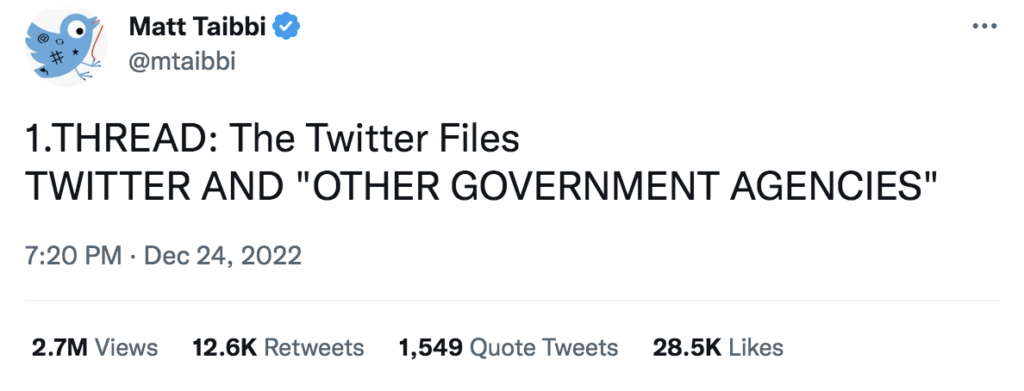
After weeks of “Twitter Files” reports detailing close coordination between the FBI and Twitter in moderating social media content, the Bureau issued a statement Wednesday.
2. It didn’t refute allegations. Instead, it decried “conspiracy theorists” publishing “misinformation,” whose “sole aim” is to “discredit the agency.”

3. They must think us unambitious if our “sole aim” is to discredit the FBI. After all, a whole range of government agencies discredit themselves in the #TwitterFiles. Why stop with one?
4. The files show the FBI acting as doorman to a vast program of social media surveillance and censorship, encompassing agencies across the federal government – from the State Department to the Pentagon to the CIA.
5. The operation is far bigger than the reported 80 members of the Foreign Influence Task Force (FITF), which also facilitates requests from a wide array of smaller actors – from local cops to media to state governments.
6. Twitter had so much contact with so many agencies that executives lost track. Is today the DOD, and tomorrow the FBI? Is it the weekly call, or the monthly meeting? It was dizzying.


7. A chief end result was that thousands of official “reports” flowed to Twitter from all over, through the FITF and the FBI’s San Francisco field office.
8. On June 29th, 2020, San Francisco FBI agent Elvis Chan wrote to pair of Twitter execs asking if he could invite an “OGA” to an upcoming conference:
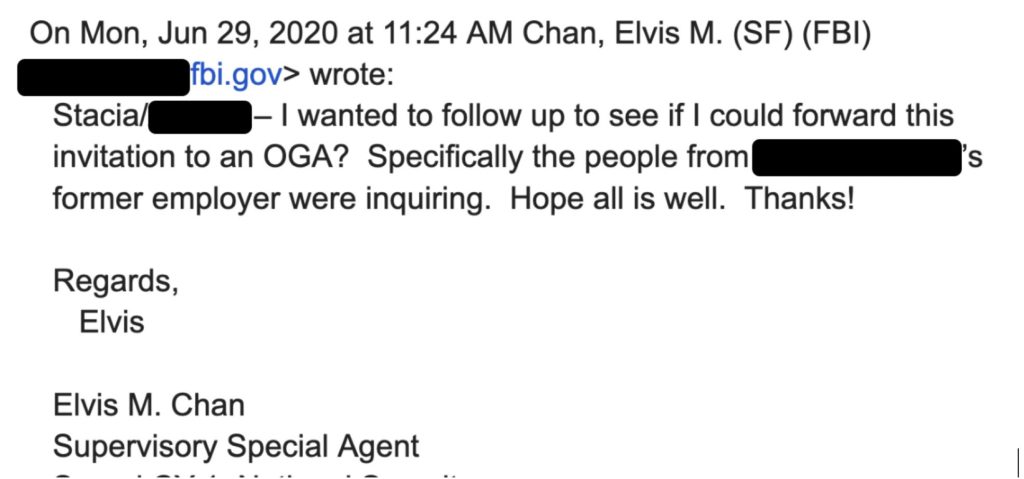
9. OGA, or “Other Government Organization,” can be a euphemism for CIA, according to multiple former intelligence officials and contractors. Chuckles one: “They think it’s mysterious, but it’s just conspicuous.”
10. “Other Government Agency (the place where I worked for 27 years),” says retired CIA officer Ray McGovern.
11. It was an open secret at Twitter that one of its executives was ex-CIA, which is why Chan referred to that executive’s “former employer.”
12. The first Twitter executive abandoned any pretense to stealth and emailed that the employee “used to work for the CIA, so that is Elvis’s question.”

13. Senior legal executive Stacia Cardille, whose alertness stood out among Twitter leaders, replied, “I know” and “I thought my silence was understood.”

14. Cardille then passes on conference details to recently-hired ex-FBI lawyer Jim Baker.
15.“I invited the FBI and the CIA virtually will attend too,” Cardille says to Baker, adding pointedly: “No need for you to attend.”
16. The government was in constant contact not just with Twitter but with virtually every major tech firm.
17. These included Facebook, Microsoft, Verizon, Reddit, even Pinterest, and many others. Industry players also held regular meetings without government.
18. One of the most common forums was a regular meeting of the multi-agency Foreign Influence Task Force (FITF), attended by spates of executives, FBI personnel, and – nearly always – one or two attendees marked “OGA.”
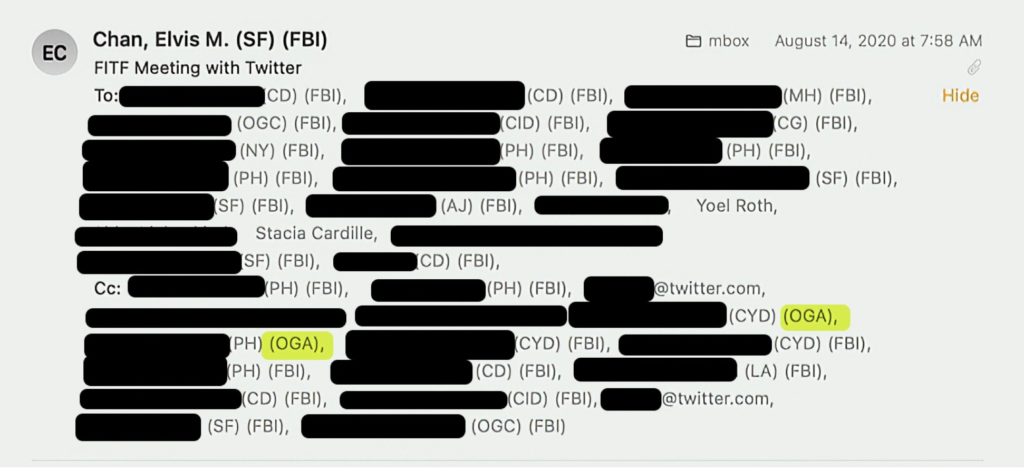
19. The FITF meeting agendas virtually always included, at or near the beginning, an “OGA briefing,” usually about foreign matters (hold that thought).
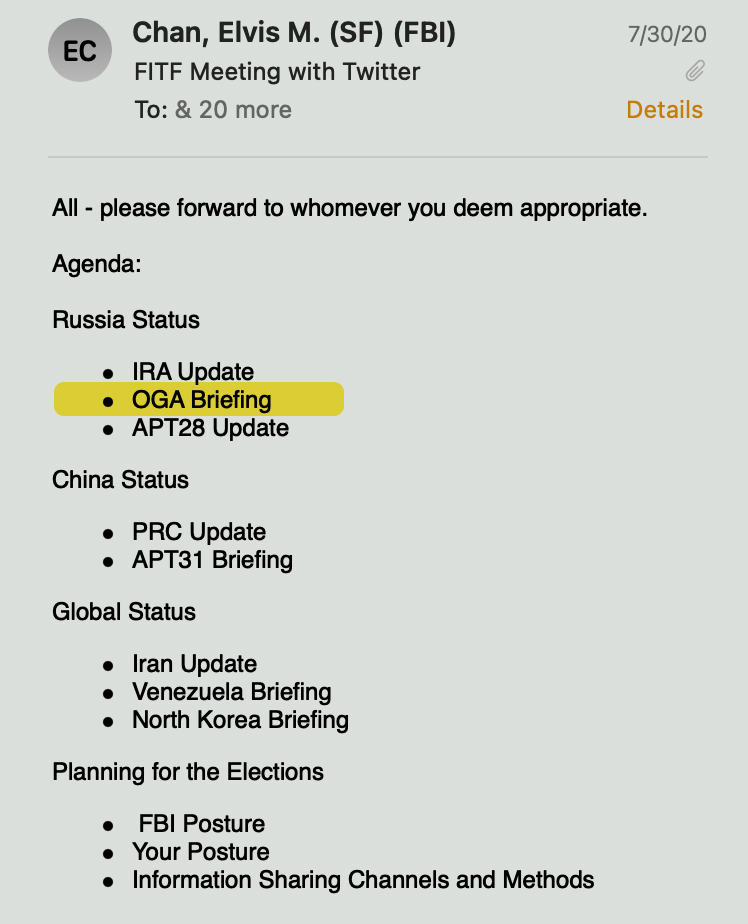
20. Despite its official remit being “Foreign Influence,” the FITF and the SF FBI office became conduit for mountains of domestic moderation requests, from state governments, even local police:
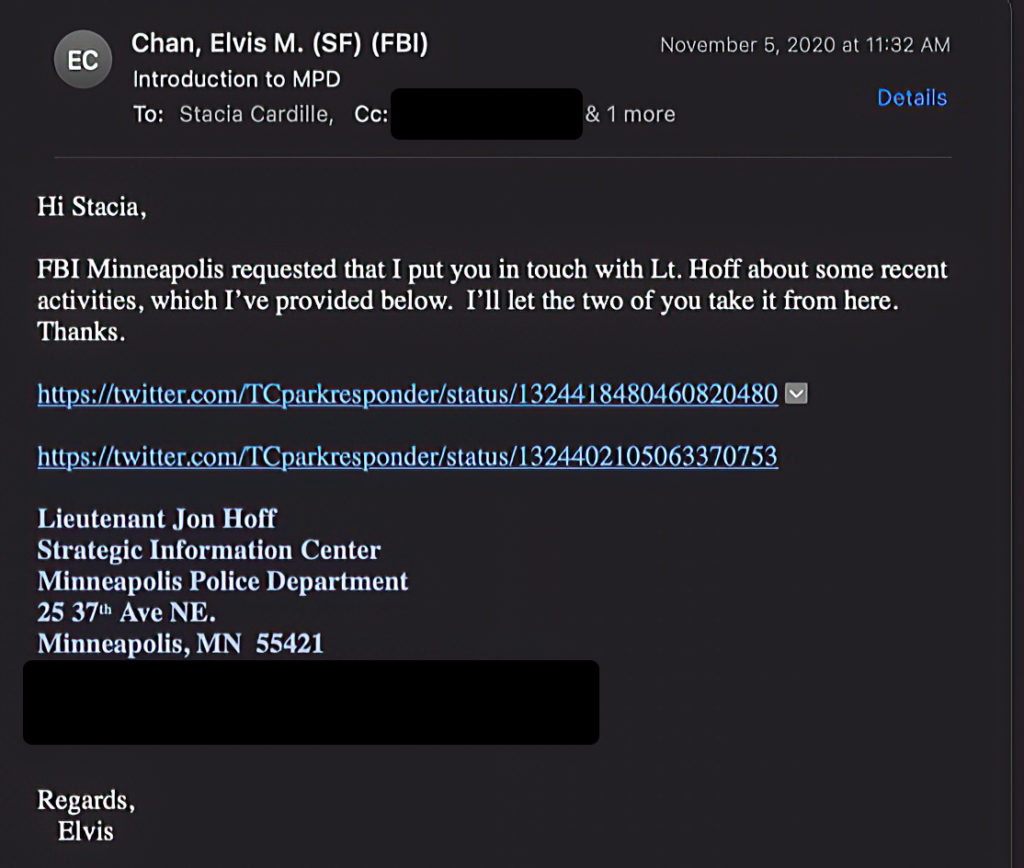
21. Many requests arrived via Teleporter, a one-way platform in which many communications were timed to vanish:

22. Especially as the election approached in 2020, the FITF/FBI overwhelmed Twitter with requests, sending lists of hundreds of problem accounts:
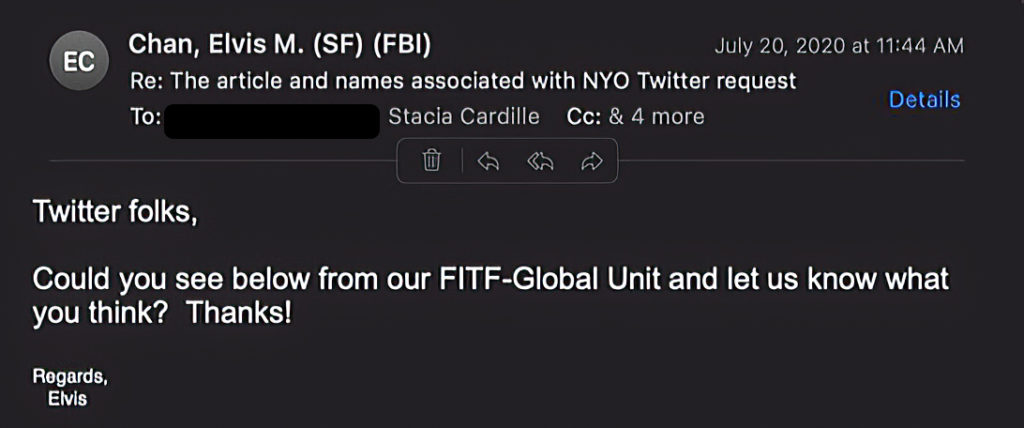

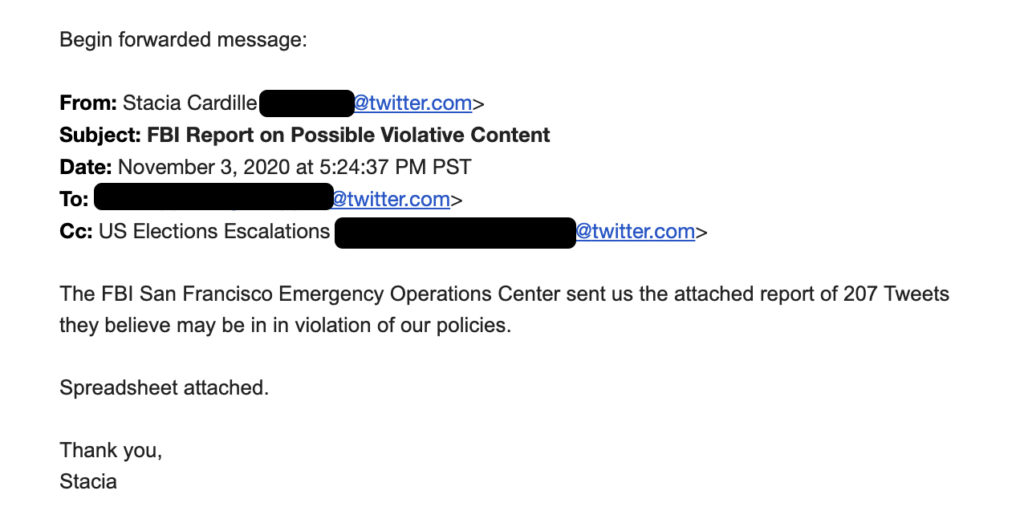
23. Email after email came from the San Francisco office heading into the election, often adorned with an Excel attachment:
24. There were so many government requests, Twitter employees had to improvise a system for prioritizing/triaging them:
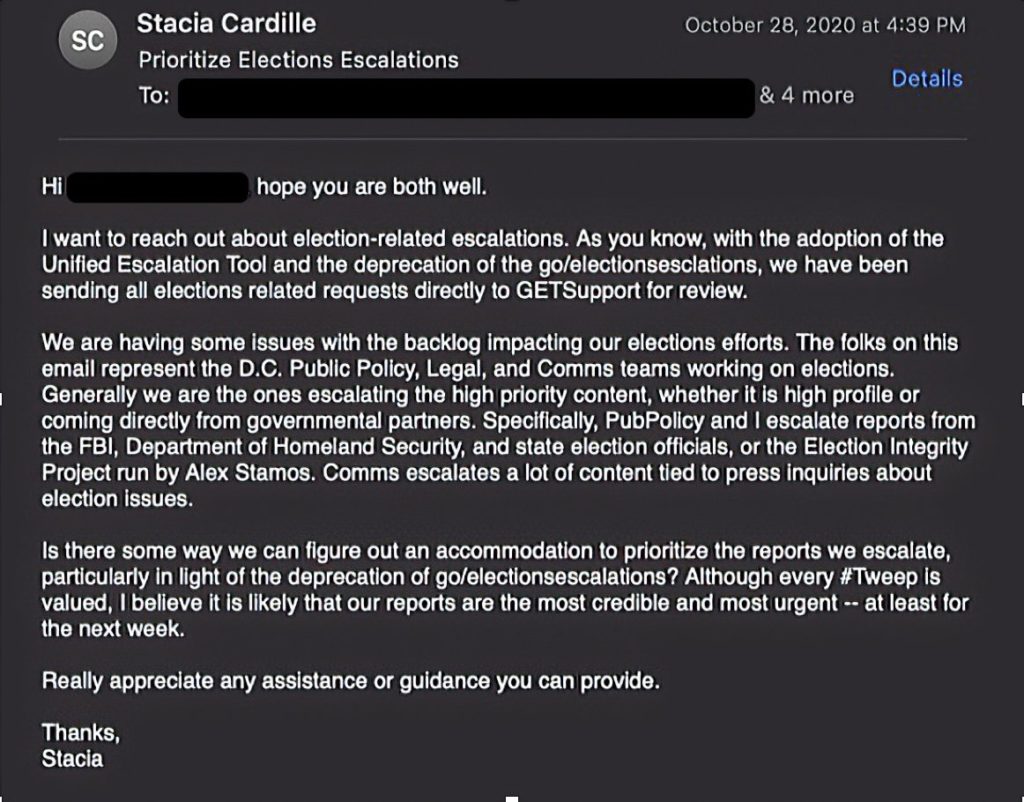
25. The FBI was clearly tailoring searches to Twitter’s policies. FBI complaints were almost always depicted somewhere as a “possible terms of service violation,” even in the subject line:

26. Twitter executives noticed the FBI appeared to be aasigning personnel to look for Twitter violations.
27.“They have some folks in the Baltimore field office and at HQ that are just doing keyword searches for violations. This is probably the 10th request I have dealt with in the last 5 days,” remarked Cardille.
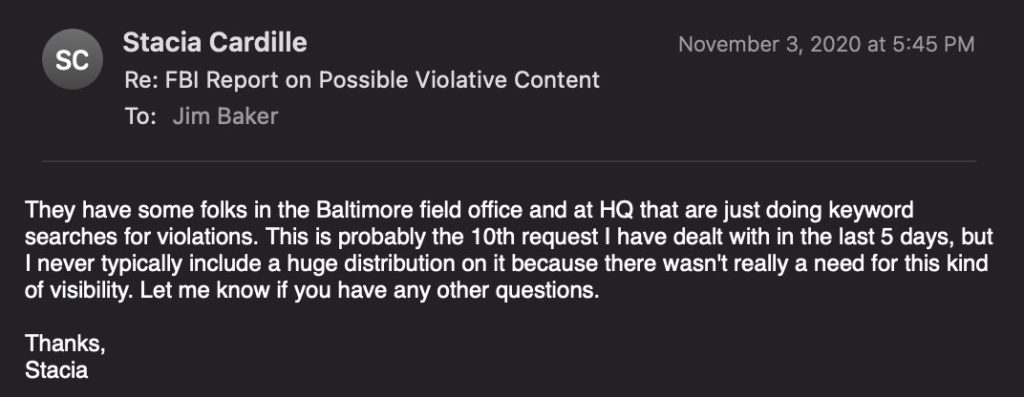
28. Even ex-FBI lawyer Jim Baker agreed: “Odd that they are searching for violations of our policies.”

29. The New York FBI office even sent requests for the “user IDs and handles” of a long list of accounts named in a Daily Beast article. Senior executives say they are “supportive” and “completely comfortable” doing so.
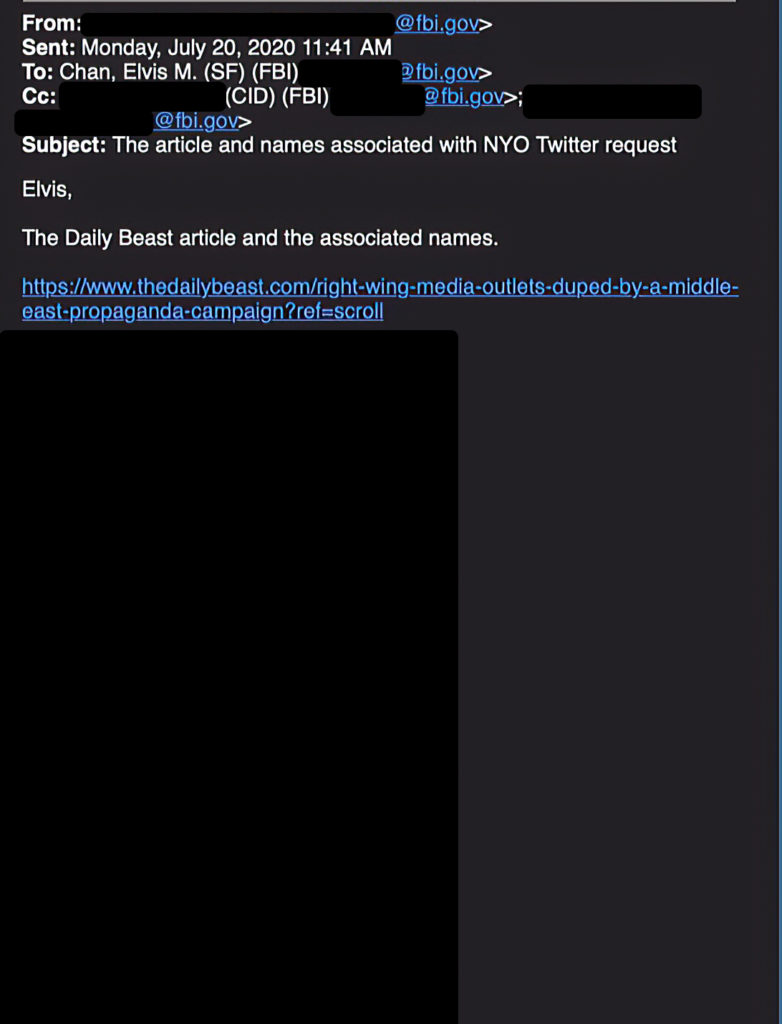

30. It seemed to strike no one as strange that a “Foreign Influence” task force was forwarding thousands of mostly domestic reports, along with the DHS, about the fringiest material:



 Whatsapp
Whatsapp





